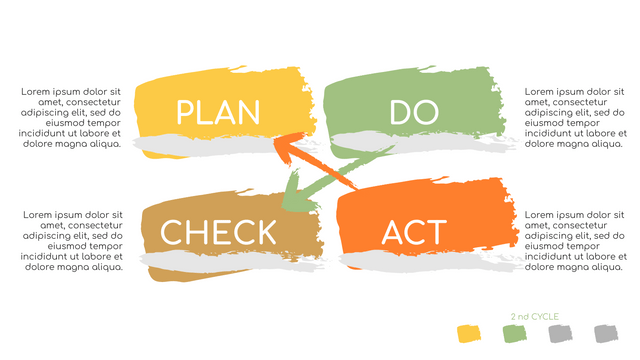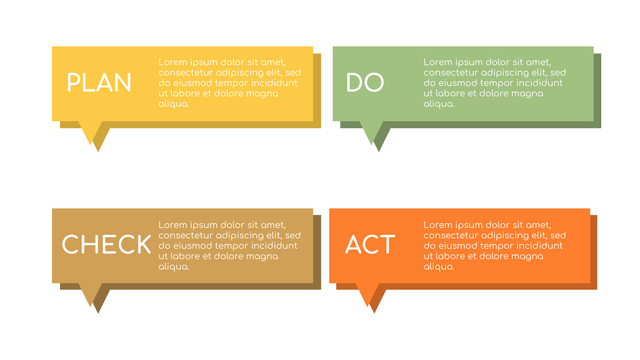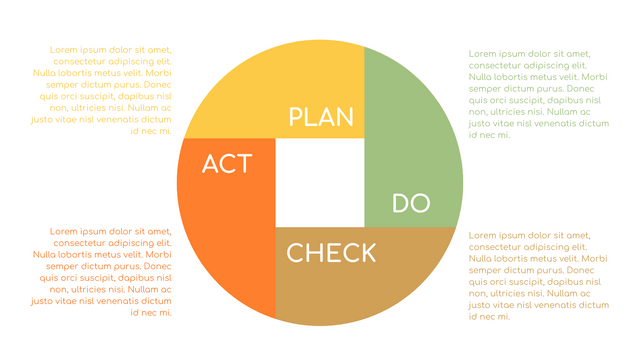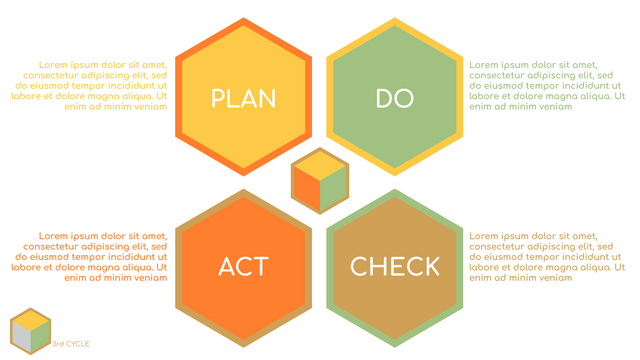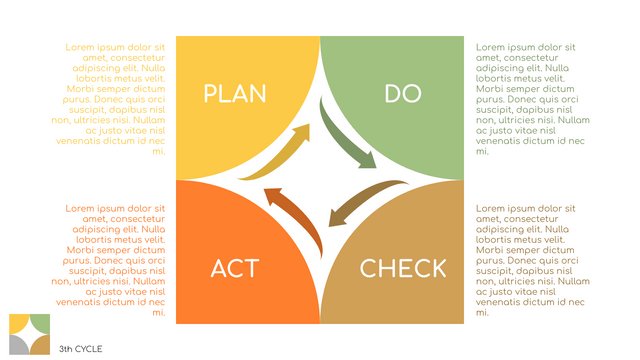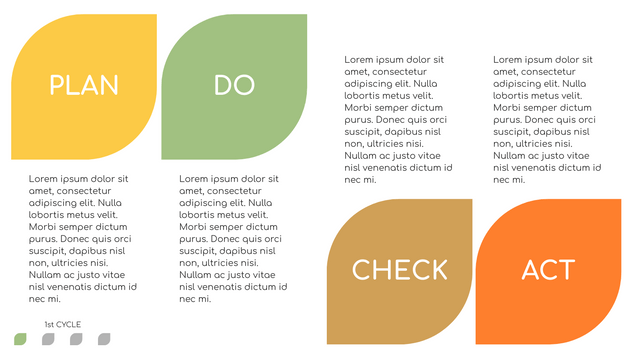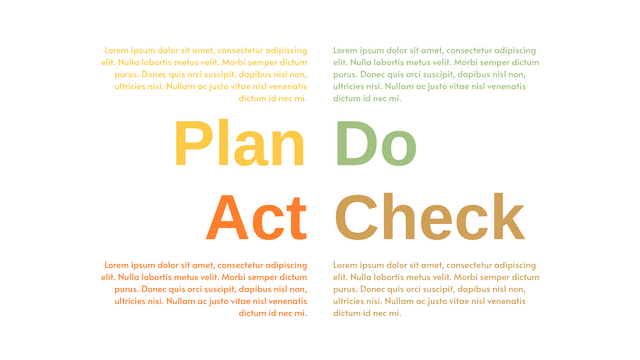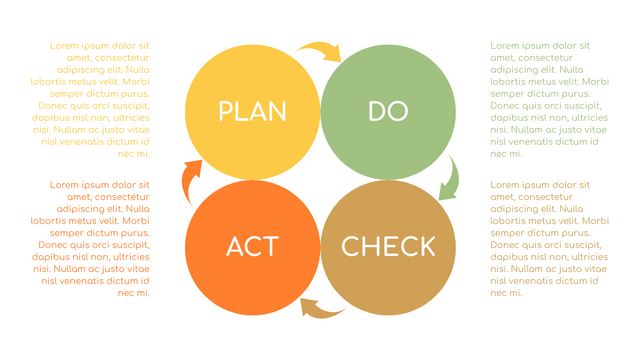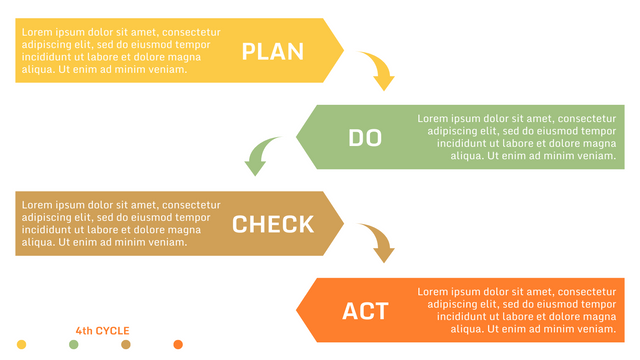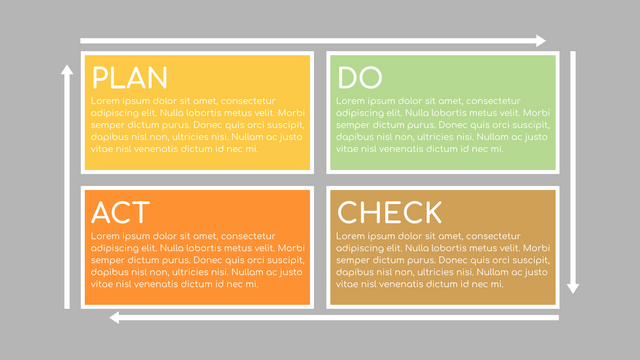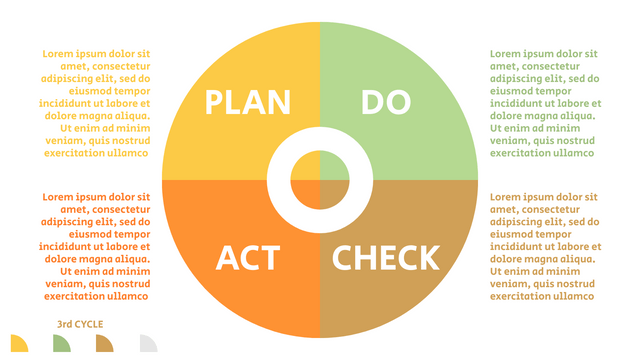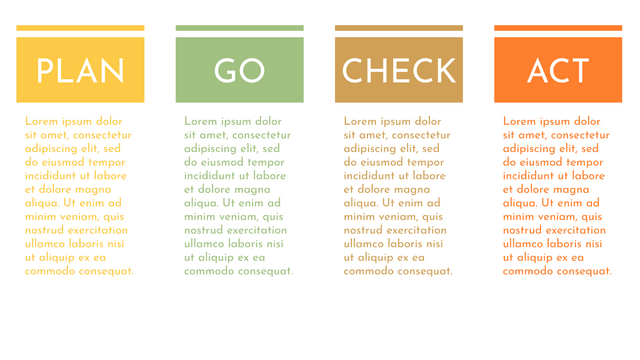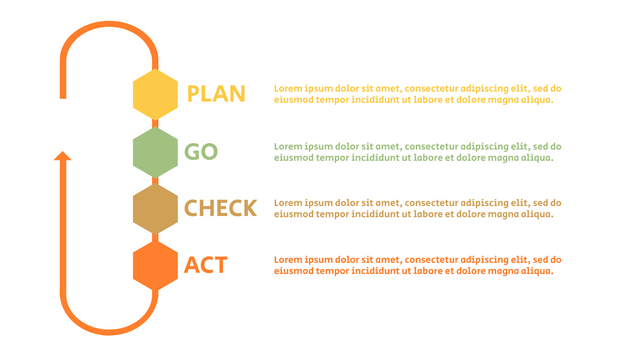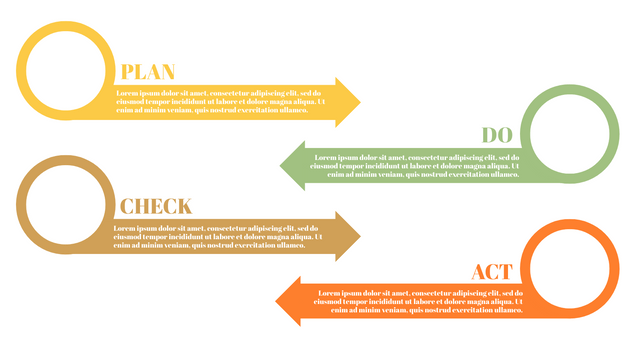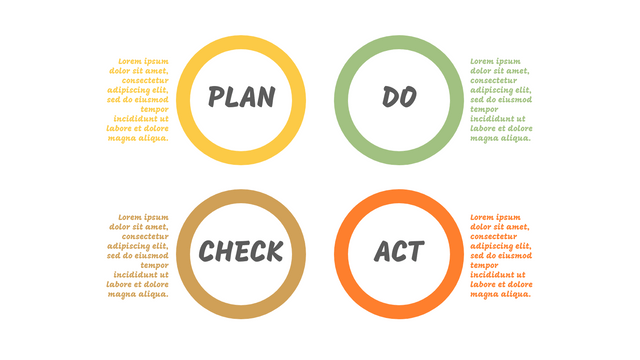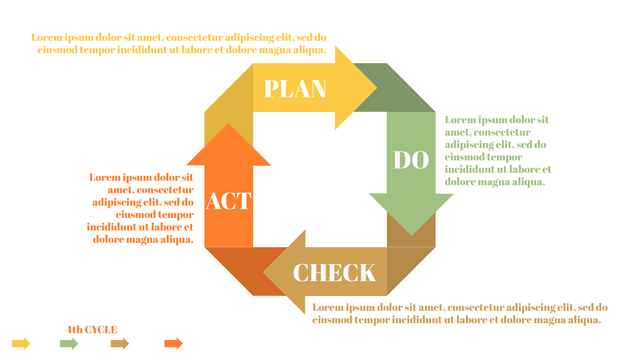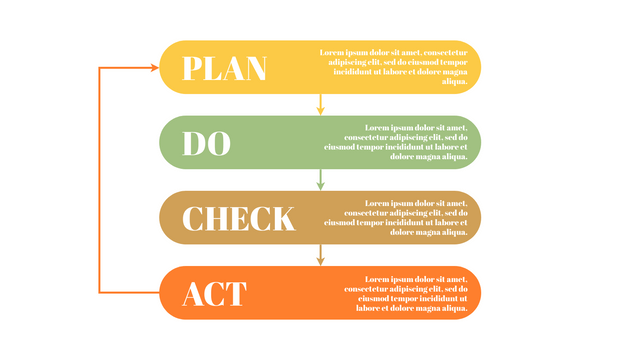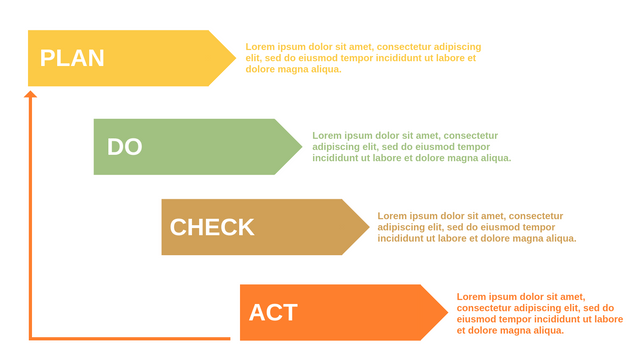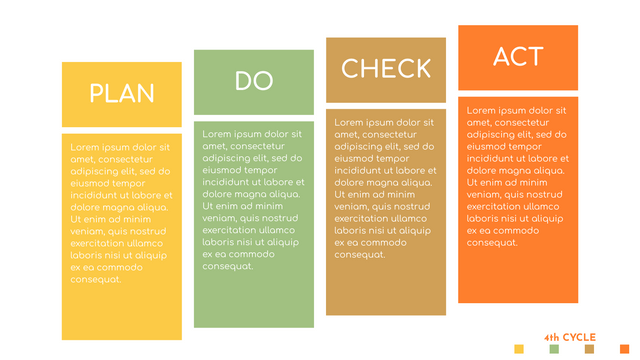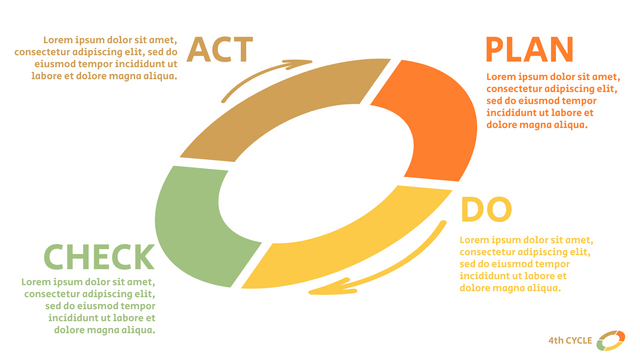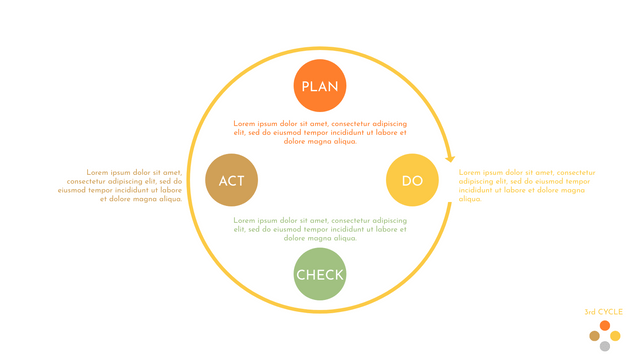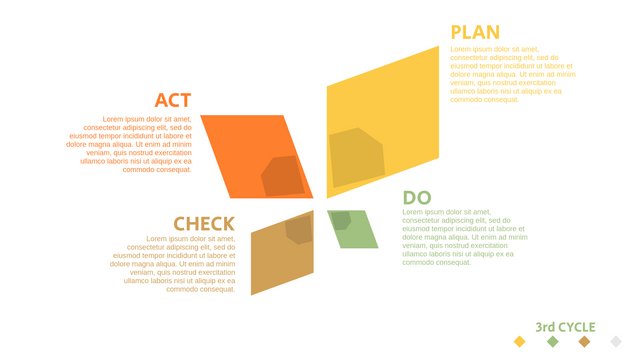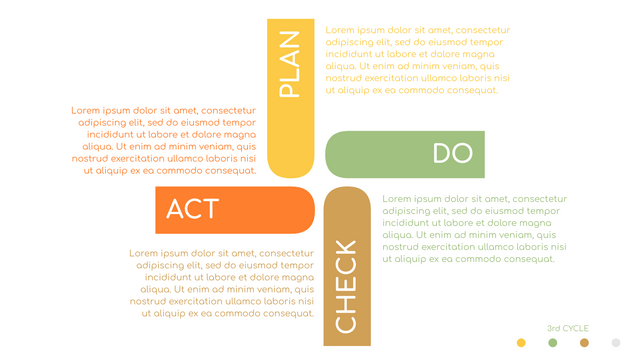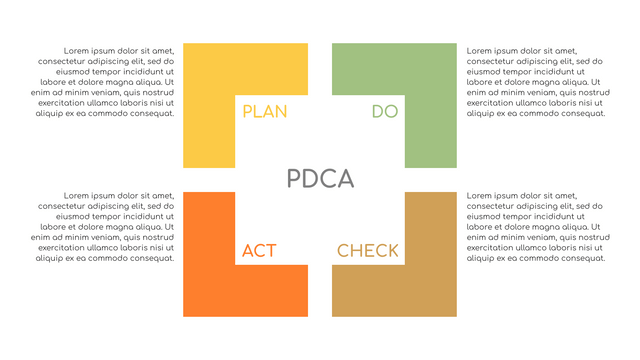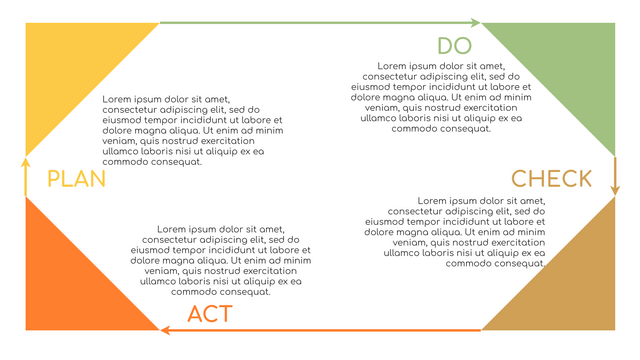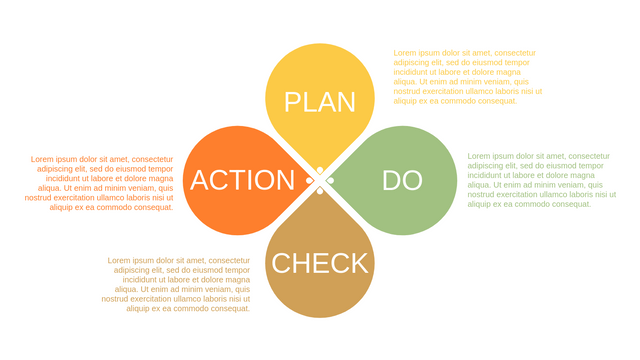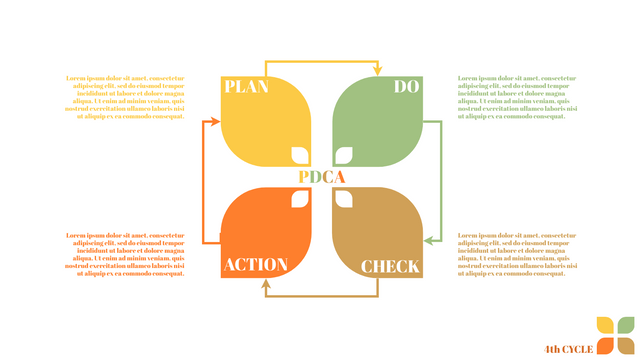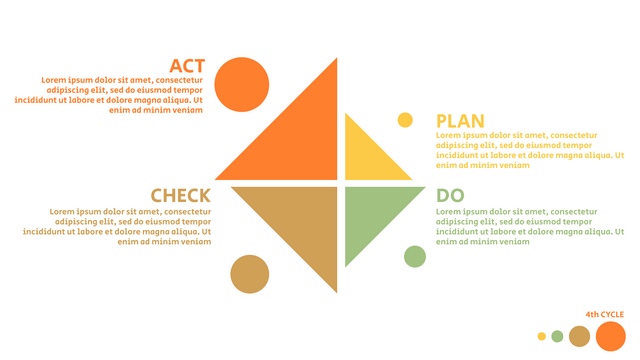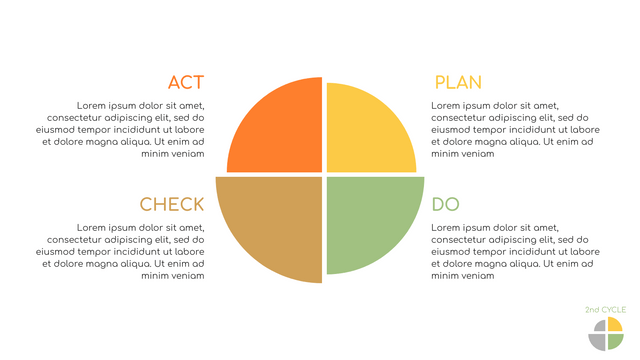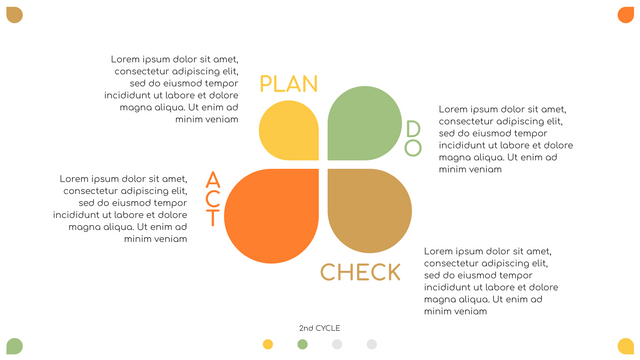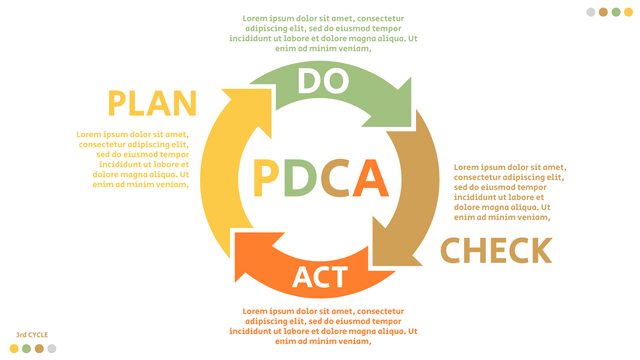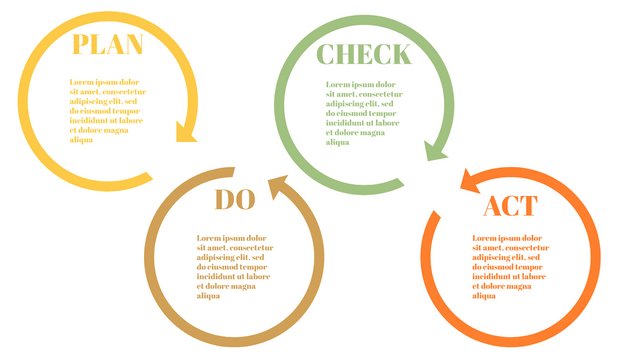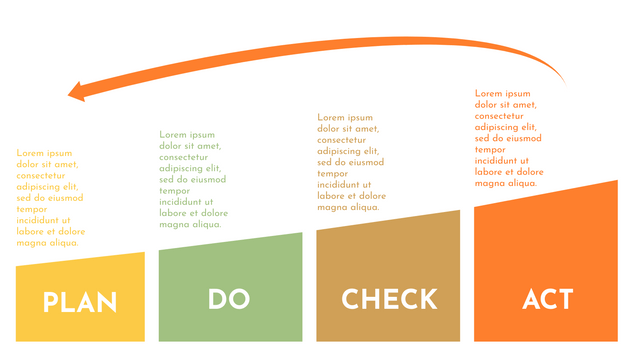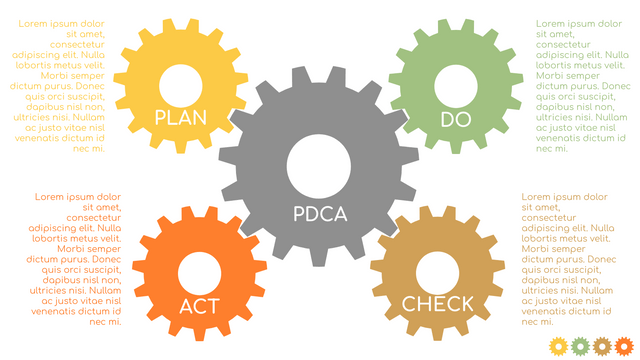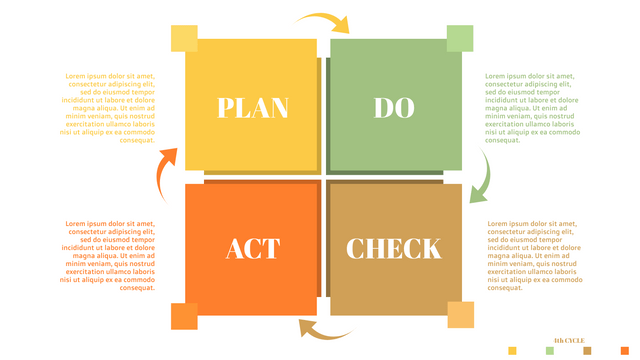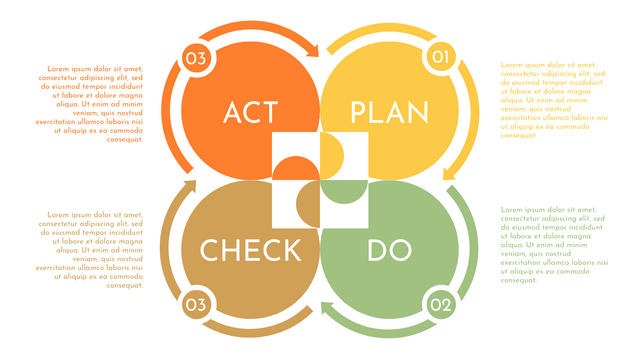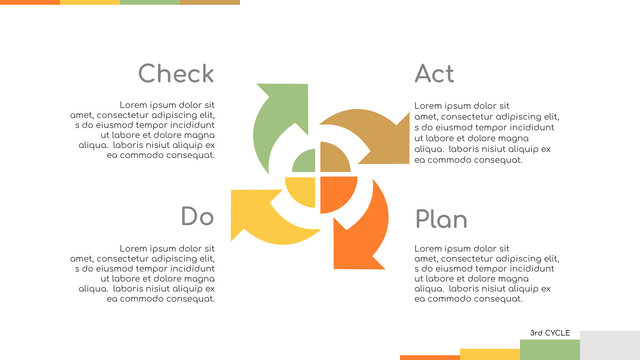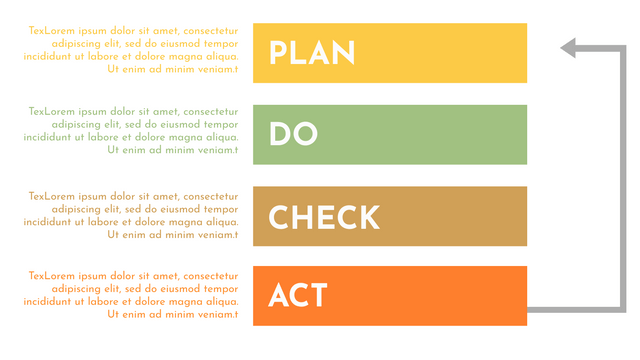PCDA is a scientific method-based improvement cycle that proposes changes in the process, implements changes, measures results, and takes appropriate action. It is also known as "Deming cycle" or "Deming wheel" as W. Edwards Deming (the concept was introduced in Japan in the 1950s).
The PDCA cycle is a quality improvement system consisting of four cyclic steps designed to achieve continuous learning and improvement within the organization.
PDCA cycle consists into four stages as described below:
Plan: identify process goals and changes needed to achieve them.
Do: implement the changes.
Check: according to the result of performance evaluation.
Act: standardize and stabilize changes based on results, or restart the cycle.
It is a tool for implementing change in the organization. Like a cycle, PDCA is a never-ending process that leads to continuous improvement within the organization.
The Goal of PDCA
The goal of PDCA cycle is to make changes and solve problems. PDCA is the process of ensuring that you plan, test, and incorporate feedback before committing to implementation. PDCA is like a cycle, an endless process, leading to continuous improvement within the organization.
The main benefits to human nature are as follows:
PDCA provides a systematic approach to knowledge acquisition and implementation of change. Adopting the PDCA cycle increases the process knowledge of employees, broadens decision options, and improves the likelihood of sustainable long-term development.

